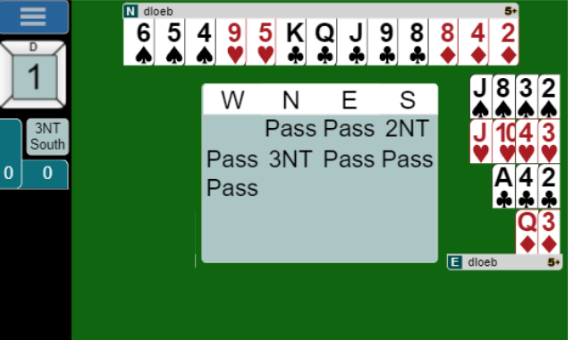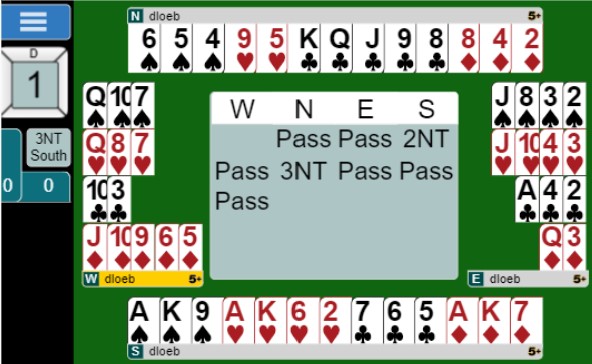The goal of a hold-up play is to sever the opponents’ communication to prevent the opponents from running a suit. The opponent with the long suit is the Dangerous Opponent because they can run their suit if they gain the lead. If the Dangerous Opponent has an outside entry, they may be able to run the suit despite the hold-up play. If you have a choice of finesses, you should prefer taking finesses that don’t risk putting the the Dangerous Opponent on lead. This is called an Avoidance Pay. Similarly, if you need to lose the lead to establish your suit, you want to avoid losing the lead to the Dangerous Opponent.
On the board below, declarer (South) will try to establish dummy's club suit. How long should East hold-up their ♣Ace?

If declarer has 3 clubs, Easts needs to hold-up their Ace until the 3rd round of clubs.

If declarer has a doubleton club, East should take their Ace on the 2nd round of clubs.

How can a defender know how long to hold-up? As discussed in our Defensive Signals aritcle, the Count signal can be used on declarer's (or dummy's) lead to signal whether you have an odd or even number of cards in the suit. In the above example, using standard count signals, West would play the ♣3 then higher to show an odd number of clubs. Now East would know to take their Ace on the 2nd round of clubs. In the preceding example, West holds a doubleton. So West would play high then low to show an even number of clubs. Now East would know to hold up their Ace until the 3rd round of clubs.
When you are declarer, you don't have the benefit of a Count signal. So it can be more difficult to know how long to hold-up. Sometimes the auction or the lead will help you determine the distribution. For example, if the defenders play 4th best lead and the opening lead is the 5 followed by the 2, the opening leader is advertising a 5-card suit or a doubleton.
Situations where you don’t want to hold up:
1. When you have so many winners that holding up will cost a trick
2. When you have only 1 opportunity to take a trick (e.g. you have a chance to win your King holding Kx or your Queen from Qxx.
3. When you have the potential to promote a 2nd stopper. (e.g. don’t hold up with AJ3 opposite T4. Win the opponents’ King or Queen to promote a 2nd stopper)
4. When the opponents can switch to a suit that would be worse for you




